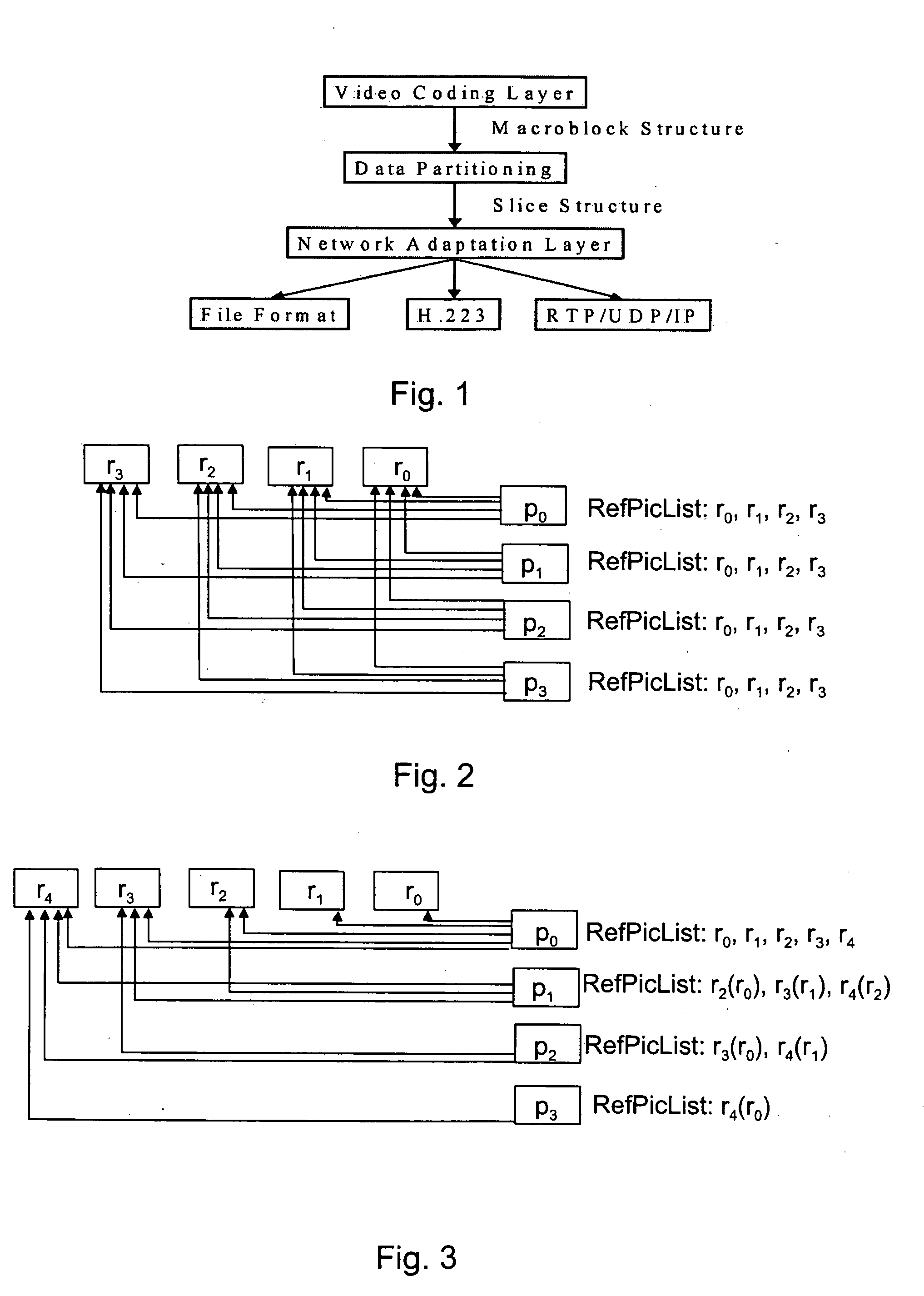Encoding and decoding of redundant pictures
a technology of encoding and decoding of video data, applied in the direction of signal generators with optical-mechanical scanning, color televisions with bandwidth reduction, television systems, etc., can solve the problems of transmission errors, affecting the decoding quality of current pictures, and many video communication systems undergo transmission errors, so as to achieve advantageously prevent drifting errors
- Summary
- Abstract
- Description
- Claims
- Application Information
AI Technical Summary
Benefits of technology
Problems solved by technology
Method used
Image
Examples
Embodiment Construction
[0032] For the sake of illustration, the invention will now be explained by using the H.264 video coding as an example. However, the invention is not limited to H.264 only, but it is applicable to all video coding methods, wherein redundant pictures are supported. The invention is particularly applicable to different low bit rate video codings typically used in limited-band telecommunication systems, wherein efficient prevention of temporal error propagation is needed and typically no feedback channel is available. In these systems, the invention is applicable for instance in mobile stations comprising video applications.
[0033] The H.264 video coding will be described to a detailed level considered satisfactory for understanding the invention and its preferred embodiments. For a more detailed description of H.264, a reference is made to the documents: ITU-T Recommendation H.264 and ISO / IEC International standard 14496-10:2003.
[0034] In H.264, images are coded using luminance and t...
PUM
 Login to View More
Login to View More Abstract
Description
Claims
Application Information
 Login to View More
Login to View More - R&D
- Intellectual Property
- Life Sciences
- Materials
- Tech Scout
- Unparalleled Data Quality
- Higher Quality Content
- 60% Fewer Hallucinations
Browse by: Latest US Patents, China's latest patents, Technical Efficacy Thesaurus, Application Domain, Technology Topic, Popular Technical Reports.
© 2025 PatSnap. All rights reserved.Legal|Privacy policy|Modern Slavery Act Transparency Statement|Sitemap|About US| Contact US: help@patsnap.com



